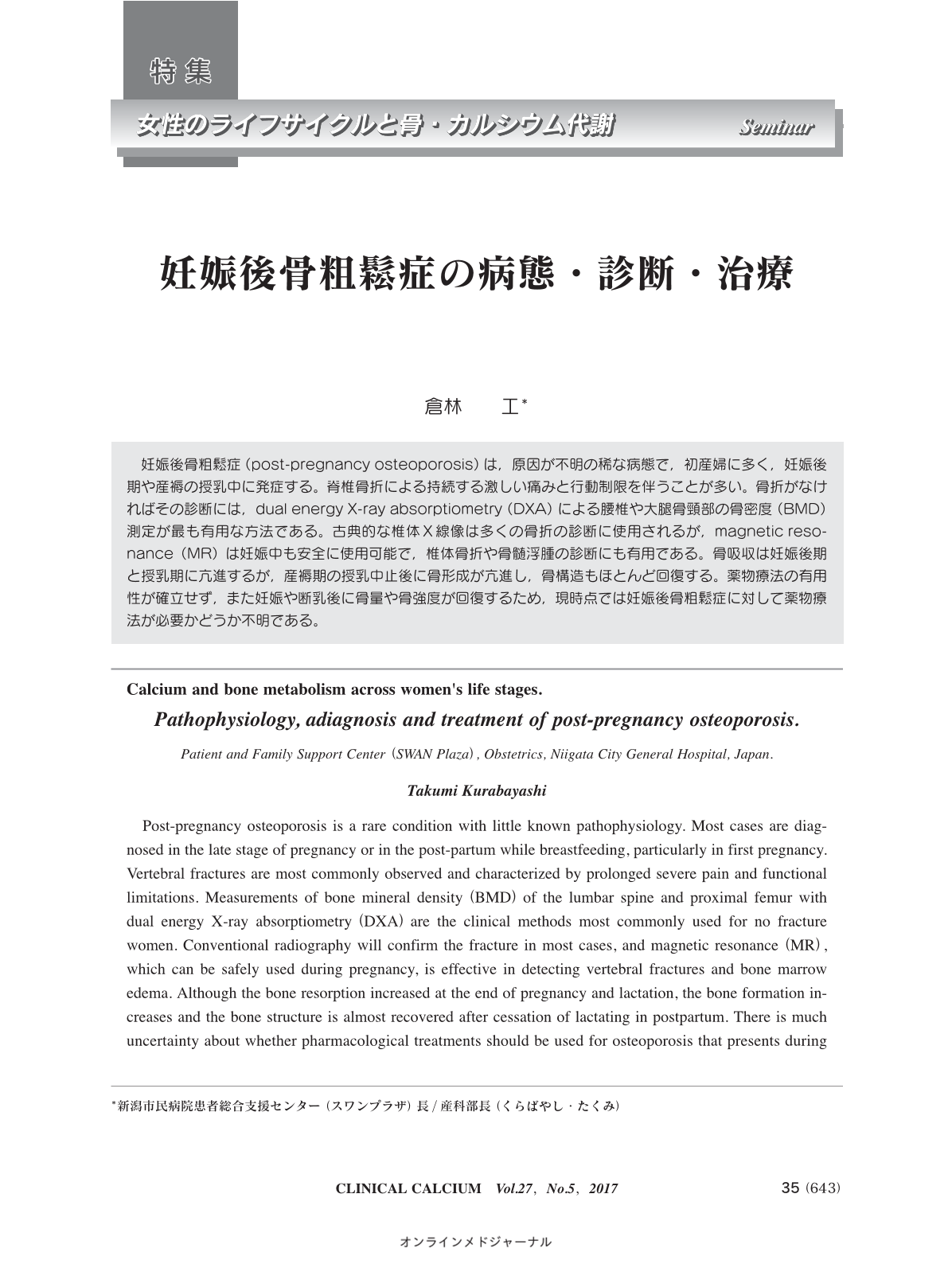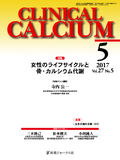Japanese
English
- 有料閲覧
- Abstract 文献概要
- 1ページ目 Look Inside
- 参考文献 Reference
妊娠後骨粗鬆症(post-pregnancy osteoporosis)は,原因が不明の稀な病態で,初産婦に多く,妊娠後期や産褥の授乳中に発症する。脊椎骨折による持続する激しい痛みと行動制限を伴うことが多い。骨折がなければその診断には,dual energy X-ray absorptiometry(DXA)による腰椎や大腿骨頸部の骨密度(BMD)測定が最も有用な方法である。古典的な椎体X線像は多くの骨折の診断に使用されるが,magnetic resonance(MR)は妊娠中も安全に使用可能で,椎体骨折や骨髄浮腫の診断にも有用である。骨吸収は妊娠後期と授乳期に亢進するが,産褥期の授乳中止後に骨形成が亢進し,骨構造もほとんど回復する。薬物療法の有用性が確立せず,また妊娠や断乳後に骨量や骨強度が回復するため,現時点では妊娠後骨粗鬆症に対して薬物療法が必要かどうか不明である。
Post-pregnancy osteoporosis is a rare condition with little known pathophysiology. Most cases are diagnosed in the late stage of pregnancy or in the post-partum while breastfeeding, particularly in first pregnancy. Vertebral fractures are most commonly observed and characterized by prolonged severe pain and functional limitations. Measurements of bone mineral density(BMD)of the lumbar spine and proximal femur with dual energy X-ray absorptiometry(DXA)are the clinical methods most commonly used for no fracture women. Conventional radiography will confirm the fracture in most cases, and magnetic resonance(MR), which can be safely used during pregnancy, is effective in detecting vertebral fractures and bone marrow edema. Although the bone resorption increased at the end of pregnancy and lactation, the bone formation increases and the bone structure is almost recovered after cessation of lactating in postpartum. There is much uncertainty about whether pharmacological treatments should be used for osteoporosis that presents during pregnancy and lactation. This is partly because of the lack of a firm evidence base for treatment and also because there is a spontaneous recovery of bone mass and strength after pregnancy or weaning.



